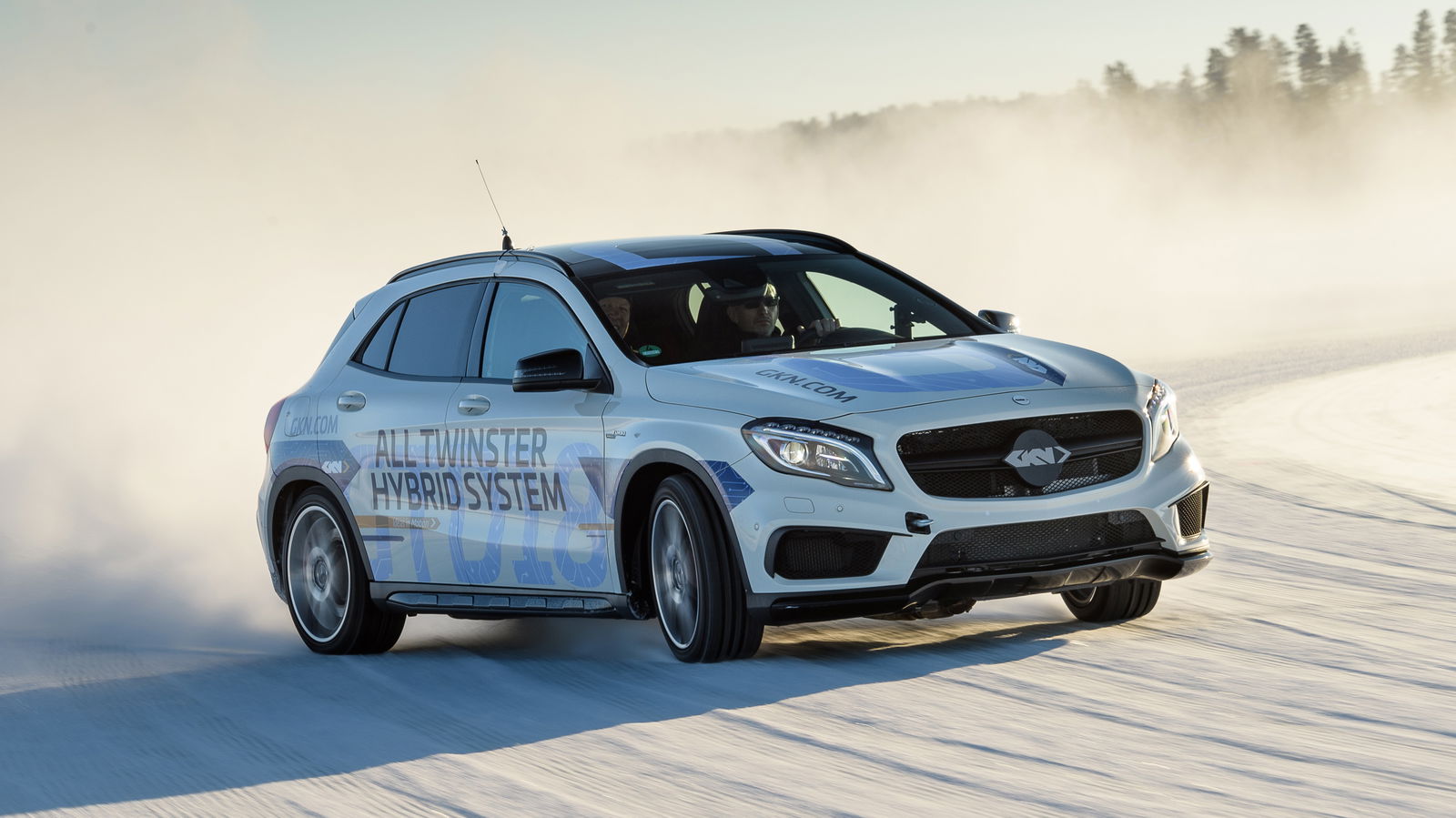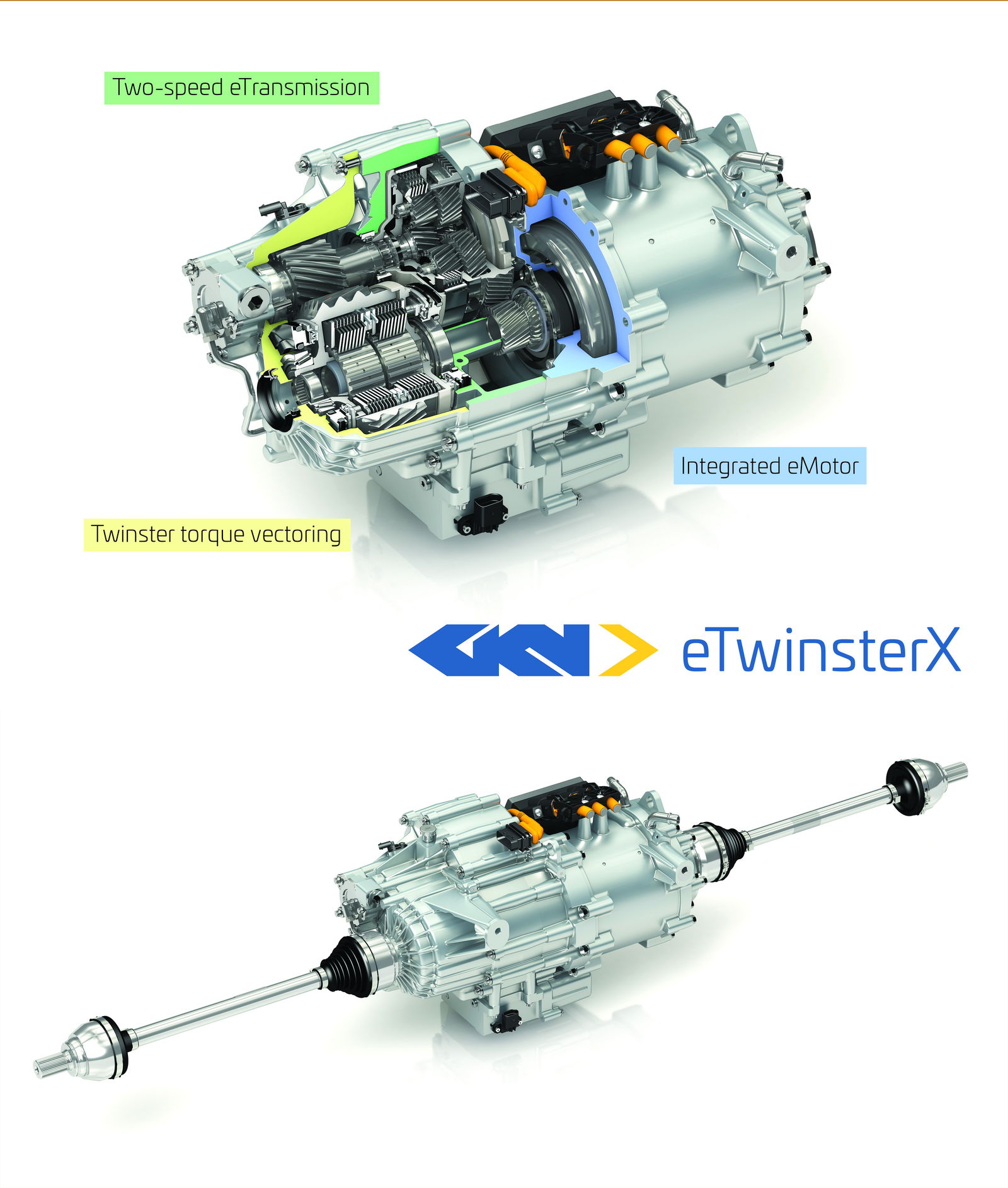This Fascinating, Experimental Twin-Engine Hybrid Drivetrain Is The Future

What you’re looking at is not a test mule for the next Mercedes-AMG GLA 45. It’s far more interesting than that. This is the one-of-a-kind, hybrid-drive, hybrid-four-wheel drive GKN Technology Demonstrator 2018, or GTD18 for short.
Based on a GLA 45, this car has a unique combination of a standalone electrified rear axle connected to batteries beneath the rear seats, with a totally new ‘Twinster’ arrangement for the front axle that replaces the final drive and differential with a secondary twin-clutch transmission attached to the gearbox. Its job is to quickly vary torque distribution between the wheels.

The standard car’s Power Transfer Unit, prop shaft and rear axle have been binned, so there’s no mechanical connection between the axles. Instead, the two-speed electric rear axle, called eTwinsterX, provides 161bhp and 155lb ft, a combination of low and high-speed acceleration, and the option to run in a zero-emission mode. It’s built in a coaxial layout, so it’s compact and easy to slot into existing platforms. An independent e-axle isn’t necessarily a new thing in principle, but this one’s design is.
It’s built as a ‘bolt-on’ system for manufacturers who want to quickly hybridise and/or boost the performance of their new models without the massive investment that’s normally involved. Key to its appeal is that in the GTD18 the eTwinsterX runs in harmony with the mechanically-driven Twinster-controlled front axle, so torque vectoring can be applied across all four wheels in a near-infinite number of variations.

The prototype GLA can run on just the mechanical front axle, powered by the car’s usual 375bhp turbocharged four-cylinder engine, just the rear axle for electric smoothness and quietness, or both axles together in a constant dance of electronics that balance both to give theoretically bonkers levels of speed, control and safety.
It can send the outer wheels more torque during cornering, to eliminate understeer and boost cornering speeds. It can send torque to the corners where there’s most grip, if the going is slippery. It can basically do whatever it needs to, and as a drivetrain concept we have to say it looks absolutely brilliant; a best of most worlds solution that marries huge performance with clever tech and lower likelihood of ending up in a ditch.
The only thing we might change is to swap the axles, front and rear. We’ll take petrol power at the back, please, but on cars that place the gearbox at the back, it should be possible.

There are no official performance stats for the GTD18, but we’d expect it to be quick. GKN has form in building advanced test cars like this: take the 1968 Lotus 47 Europa that was fitted with a 3.5-litre Rover V8 and massively-upgraded drivetrain. It could hit 60mph in 5.0 seconds. That’s faster than the brand new 3.0-litre TFSI Audi A6 we told you about earlier today.
A GKN-modified Jensen Interceptor FF arrived in 1971, with a bespoke 7.0-litre V8 and 600bhp. Complete with a Ferguson Formula four-wheel drive system it set a 0-100-0mph record of 11.5 seconds, which lasted two decades until being beaten by the mighty McLaren F1.

Comments
Highlighted word: “possibilities”
The smartest car in the world!
This has been a thing for a while. Volvo has been there done that
Is there a estimated time for implemention?
As the tech advances and engineers come up with even more complex products, my head jumps to the future what if. Buying one of these tech heavy cars in the future when it is out of motorplan.. what will a fault or “need to replace this” cost your pocket?
For that reason alone, I, personally, prefer the mechanical.
The future is variable-compression petrol engines, such as Mazda’s SkyActiv-X. All hail Mazda!
I don’t like battery things